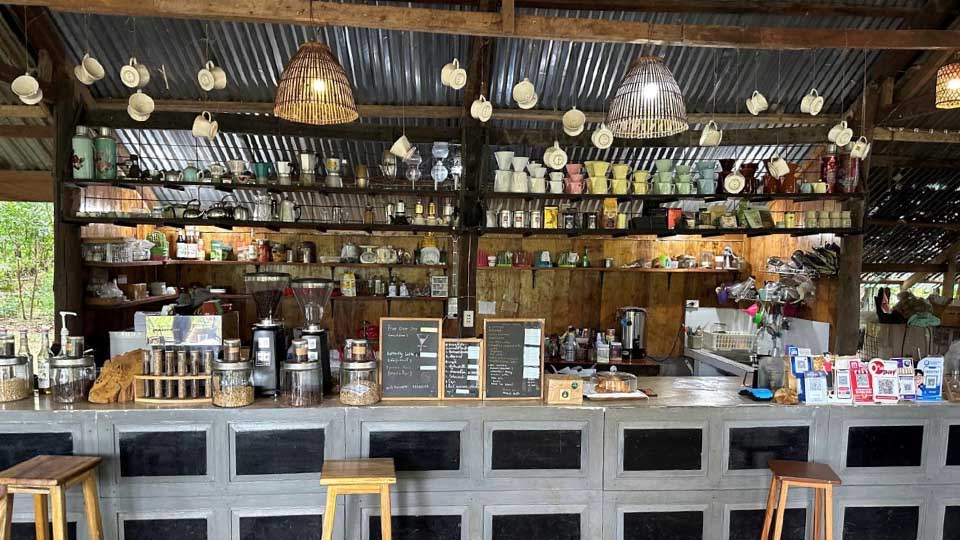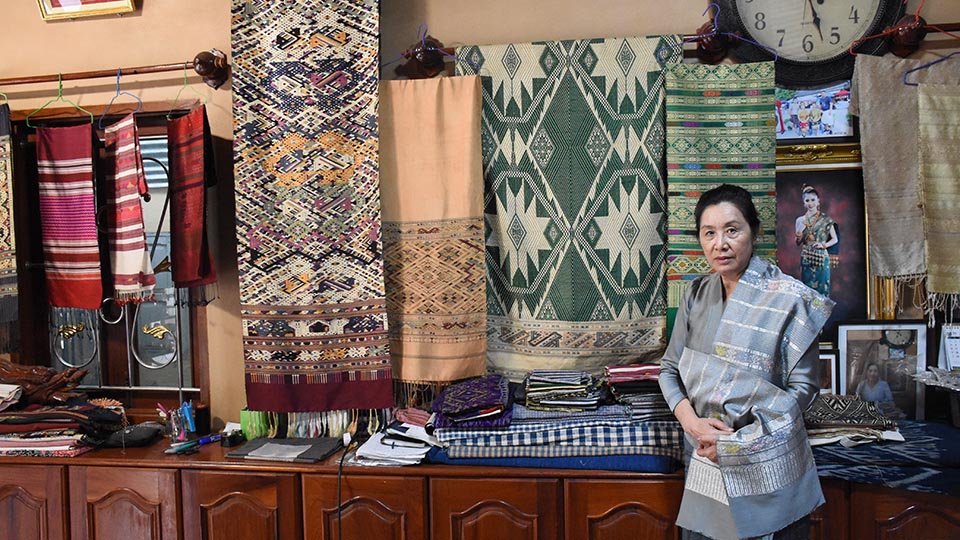From Sea Water Evaporation Cambodia GI Kampot-Kep Salt Develops Unique Qualities
Under the scorching sun, salt harvesters gather small piles of the precious “Kampot-Kep Salt” with long rakes. Salt production is vital for many local families in both Cambodian provinces. The registration of “Kampot-Kep Salt” as a geographical indication in April 2023 holds hopes of economic development, increased employment opportunities, and the preservation of cultural heritage.
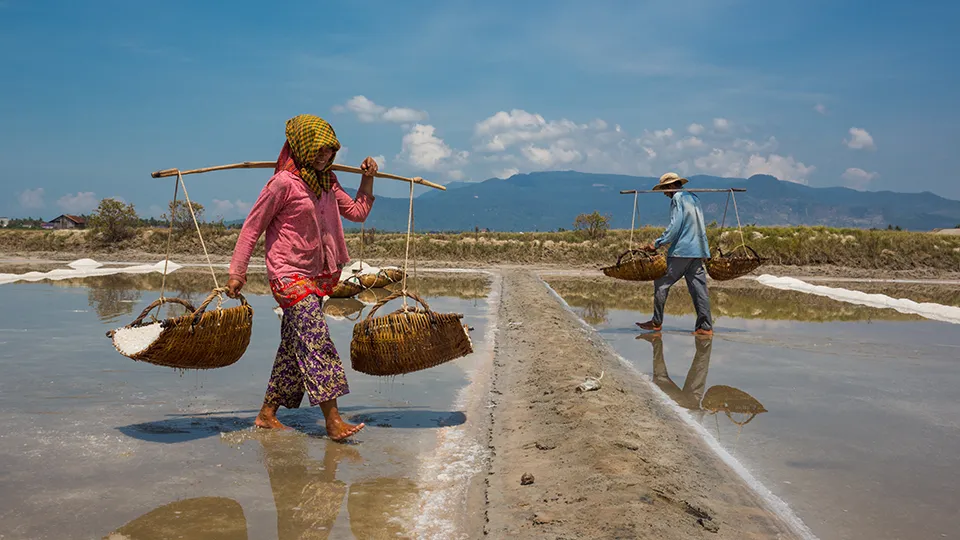
Narin Bun is the President of the Association of Geographical Indication Kampot-Kep Salt Producers. He holds a master’s degree in agriculture development, has been a salt producer for over 30 years, and is the COO of Thaung Enterprise, a company promoting “Kampot-Kep Salt” and collaborating with local farmers.
The Kampot and Kep provinces sit on the edge of the Thailand Gulf, an area that has produced sea salt for several centuries. The long, dry, hot season and flat expanses near the coast provide ideal conditions for constructing and maintaining salt pans.
Health Benefits of “Kampot-Kep Salt”
The “Kampot-Kep Salt,” described as “gently crunchy, not too salty, and even a little bit sweet” by Narin, also contains over 80 minerals and trace elements, he said. The sandy loam soil of the “Kampot-Kep Salt” production zones contributes to its unique qualities.
“Contrary to misconception,” he went on, “salt plays an important role in stabilizing irregular heartbeats and is essential for regulating blood pressure.” With its high density of minerals and its low sodium level, “Kampot-Kep Salt” promotes hydratation, bone health, respiratory and digestive functions, and reduces inflammation, added Thyda Thaung, Founder and Managing Director of Thaung Enterprise.
Narin explained that beyond sodium, the “Kampot-Kep Salt” contains trace elements of magnesium, potassium, iron, zinc, and plenty more.
Kampot-Kep Salt Making Process
Labor-Intensive Strict Production Standards
“Kampot-Kep Salt” producers follow strict production standards and labor-intensive traditional methods.
Sophal Chhun is a “Kampot-Kep Salt” producer in Beoung Touk Center in Kampot, who has 23 hectares of salt marshes and works with five family members. The process, he said, includes many steps. The first is the irrigation of the salt pans, usually in November, at the beginning of the dry season. Then, the shallow pans are thoroughly cleaned of mold and weeds accumulated during the rainy season and must be chemical-free.
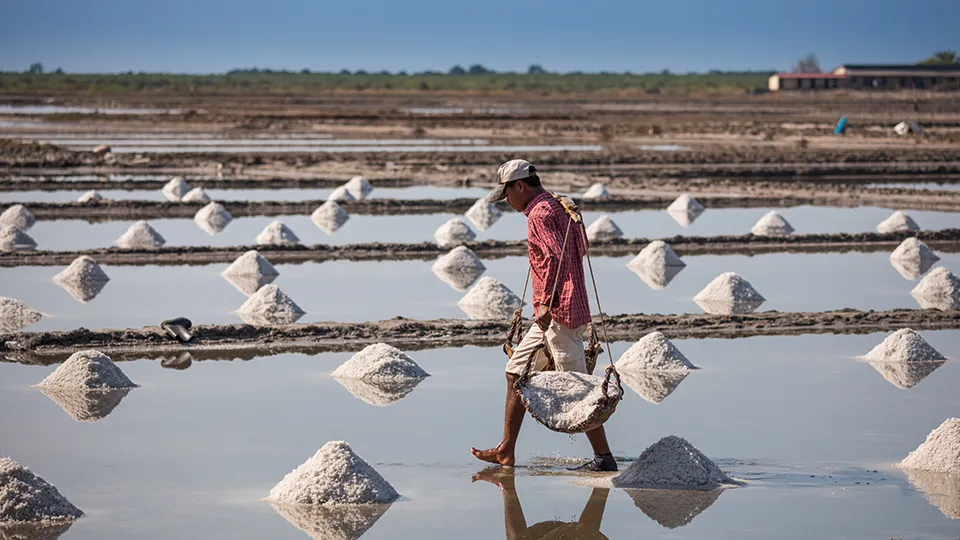
He explained that the soil is compacted before filling the retention pans with seawater, where the evaporation will increase its density to 20 Baume (density measure). The water is then filtered and allowed to flow in succeeding production pans. In the final harvesting pans, it takes about one week for the intense sun to evaporate most of the water, allowing harvesters to collect the crust of crystalline salt.
The storage conditions must also be clear of all foreign matters. The salt is unrefined and free of additives, except for iodine, a legal requirement in Cambodia.
The salt harvesting typically occurs during the dry season, from December to April, as the reduced likelihood of rain ensures a higher quality of salt, according to Narin.
A Low Sodium Salt available in Different Versions
“Kampot-Kep Salt” is commercialized under four forms produced by association members. The first is coarse salt, harvested after evaporation of seawater; the second is Fleur de Sel, a salt collected from the surface of the salt pans; the fine salt, which used to be the product of boiled seawater and now is ground coarse salt; and flakes, made from brine.
The sodium level varies based on the production and harvesting conditions, but it usually sits between 31 and 34%, much lower than other salts, particularly refined salt, which contains about 40 % sodium chloride.
GI Registration Opens New Perspectives
The GI registration of “Kampot-Kep Salt” opens new national and global market perspectives. Sophal and Pak charge “Kampot-Kep Salt” twice as much as generic salt.
However, said Narin, “educating consumers about the value and uniqueness of GI salt is crucial for justifying its premium price.” Sophal added that local consumers do not really appreciate the GI salt yet and go for cheaper, whiter salt, while Pov underlined the currently limited market size for “Kampot-Kep Salt,” preventing producers from fully reaping the benefits of the GI registration.
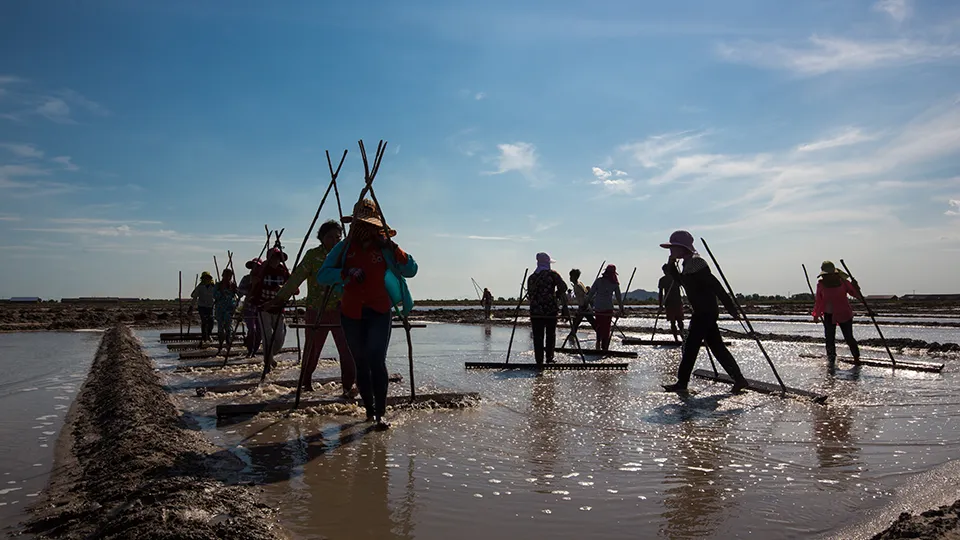
The GI registration expects to increase brand recognition, encourage a rise in culinary tourism, and provide an incentive for sustainable practices and the preservation of the cultural heritage of the ancestral salt production process passed down from generations, according to Narin. Sophal added that the GI reveals the story behind the products’ characteristics to consumers.
The association expects to register the GI in the European Union, counting on the EU consumers’ familiarity with the quality of GI products. The association applied to the WIPO-administered Lisbon System in June 2024.
Impact of Climate Change on Salt Production
Salt production is highly dependent on a predictable dry season. Kampot and Kep provinces are feeling the brunt of the changing climate with “unpredictable weather patterns and unseasonal rains that can wash away salt pans, drastically reducing yield,” said Narin.
Pov produces “Kampot-Kep Salt” on five hectares of salt marshes. Like Sophal, she has a family business, working with three family members and three workers. If the weather is favorable, she can harvest up to 100 tons of salt annually, but if the weather turns rainy, her production falls to 50 tons.
Sophal faces the same issue: his production volume can vary from 700 tons annually to 350.
Cracking Down on Fake Salt and Overcoming Challenges
Strenuous working conditions, modest profit margins, and the economic uncertainty linked to the seasonality of salt production are not appealing to youth, leading to an aging workforce.
“Kampot-Kep Salt” also faces staunch competition from cheaper industrially produced imported salt from larger producers like India, Thailand, and China, Narin explained.
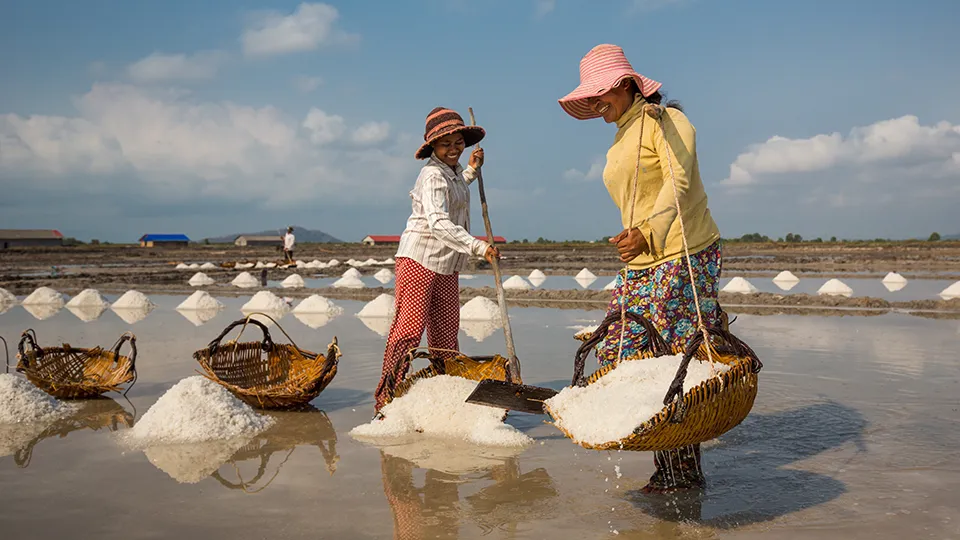
A GI registration is a mark of heightened quality and authenticity, and its higher market value whets the appetite of counterfeiters. According to Thyda, counterfeiting is a growing issue, particularly online, and a performing traceability system and strict regulations have to be set up for the national and international markets.
Growing Membership of the GI Association of Kampot-Kep Salt Producers
The association gathers 12 small producers and four companies that buy the “Kampot-Kep Salt” for commercialization. In both provinces, Narin said there are 139 generic salt producers, and he hopes many will join the association and produce GI salt in the future. He further remarked that the GI can strengthen community ties by sharing best practices, pooling resources for marketing, and tackling challenges.
WIPO was instrumental in the GI registration, providing training on GI procedures at the Cambodian Ministry of Commerce and expert advice on establishing specifications and management training for the association and its members.
